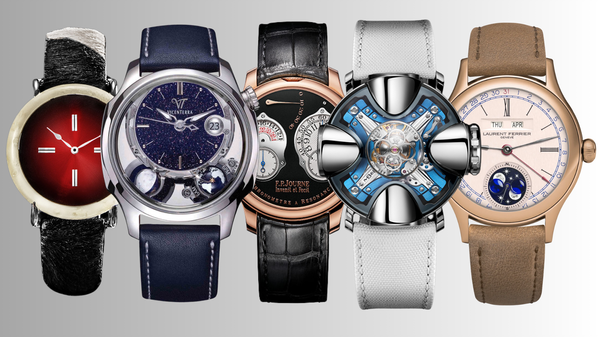All You Need to Know About the Louvre Museum
The Louvre Museum, located in the heart of Paris, is a world-renowned art museum and a historic monument. Established during the French Revolution, it houses an extensive collection of over 35,000 artworks, including masterpieces like the Mona Lisa and the Venus de Milo.

What is the Louvre Museum?
The Louvre Museum, known as Musée du Louvre in French, is the world's largest art museum and a historic monument located in Paris, France. Originally built as a fortress in the late 12th century by King Philip II, it was transformed into a royal palace and became a public museum during the French Revolution in 1793. The Louvre houses an extensive collection of art from various cultures and periods, including over 35,000 works on display.
Where is the Louvre Museum situated?
The Louvre Museum is situated in the 1st arrondissement of Paris, on the right bank of the Seine River. Its central location makes it easily accessible and allows visitors to explore nearby landmarks, such as the Tuileries Garden and the Palais Royal. The entrance is marked by the iconic glass pyramid, designed by Architect I. M. Pei.
What are the opening hours of the Louvre Museum?
The Louvre is open from 9:00 AM to 6:00 PM on Mondays, Thursdays, Saturdays, and Sundays. On Wednesdays and Fridays, it is open from 9:00 AM to 9:00 PM. The museum is closed on Tuesdays. The last entry is one hour before closing, and rooms begin clearing 30 minutes before closing time. The museum is closed on January 1st, May 1st, and December 25th but remains open on all other public holidays unless they fall on a Tuesday.
How do I get to the Louvre Museum?
The Louvre Museum is well-connected by public transport. The nearest metro stations are Palais Royal - Musée du Louvre (Lines 1 and 7) and Louvre - Rivoli (Line 1). Various bus lines also service the area, and for those walking, the museum is close to many other attractions in Paris, such as Notre-Dame Cathedral and the Champs-Élysées.
How much does it cost to enter the Louvre Museum?
As of 2024, general admission is €22. Discounts are available for students, teachers, and groups. Visitors under 18 and EU residents aged 18-25 can enter for free. The museum often has free admission days, particularly on the first Friday of the month after 6 p.m. (except in July and August) so check the website for details.
What is the best time to visit the Louvre Museum?
The best time to visit the Louvre is early in the morning or late in the afternoon on weekdays to avoid crowds. Weekends and school holidays tend to be busier. For a quieter experience, consider visiting on Wednesday or Friday evenings when the museum is open late.
What are the must-see artworks in the Louvre Museum?
Must-see artworks at the Louvre include the Mona Lisa by Leonardo da Vinci, the Venus de Milo, Eugène Delacroix's Liberty Leading the People, and the Winged Victory of Samothrace. Each piece is renowned for its historical and artistic significance, attracting millions of visitors every year.
Can I take photographs inside the Louvre Museum?
Yes, visitors are generally allowed to take photographs for personal use in most areas of the museum. However, flash photography, tripods, and selfie sticks are prohibited to protect the artwork. Some temporary exhibitions may have specific restrictions, so be sure to check for signage.
Are there guided tours available at the Louvre Museum?
Yes, the Louvre offers a variety of guided tours, including highlights tours and themed options focusing on specific collections or artists. Audio guides are available for rent, providing detailed information about the exhibits. The museum also has a mobile app that includes an audio guide feature.
How large is the Louvre Museum?
The Louvre Museum covers approximately 72,735 square metres (782,910 square feet) and houses around 380,000 objects, with about 35,000 artworks on display. It is divided into eight departments, each showcasing a vast range of cultural and historical artefacts.
What are the main collections at the Louvre Museum?
The Louvre's main collections include Near Eastern Antiquities, Egyptian Antiquities, Greek, Etruscan, and Roman Antiquities, Islamic Art, Sculptures, Decorative Arts, and Paintings. Each department features significant works that represent the artistic and historical achievements of various cultures.
What is the history behind the glass pyramid entrance?
The glass pyramid entrance, designed by architect I. M. Pei, was opened in 1989 as part of a renovation project to improve visitor access. The pyramid contrasts with the historic architecture of the museum and has become an iconic symbol of the Louvre. Its innovative design initially sparked debate but is now widely celebrated.
Is there a dress code for visitors at the Louvre Museum?
There is no formal dress code for visitors at the Louvre Museum. However, it is advisable to wear comfortable clothing and shoes, especially since visitors may spend several hours walking through the extensive galleries. Casual attire is generally acceptable.
Are there dining options inside the Louvre Museum?
Yes, the Louvre has several dining options, including cafés and restaurants. Visitors can enjoy a quick snack, coffee, or a sit-down meal within the museum. Options range from casual cafés to more formal dining experiences, offering a variety of cuisines to suit different tastes.
Can children visit the Louvre Museum?
Yes, children are welcome at the Louvre Museum. The museum offers family-friendly activities and educational resources to engage younger visitors. Special workshops and events for children are frequently held, making it an enjoyable experience for families.
Does the Louvre Museum host temporary exhibitions?
Yes, the Louvre frequently hosts temporary exhibitions that focus on specific themes, artists, or cultural topics. These exhibitions provide visitors with the opportunity to see unique artefacts and artworks that are not part of the permanent collection, enriching the overall experience.
Is there a museum shop at the Louvre?
Yes, the Louvre has several shops offering a wide range of products, including art books, replicas of famous artworks, souvenirs, and educational materials. The shops are a great place to find unique gifts and keepsakes related to the museum’s extensive collection.
Can I rent an audio guide at the Louvre Museum?
Yes, audio guides are available for rent at the Louvre Museum. These guides provide insightful commentary about the museum's collections, enhancing the visitor experience. Visitors can choose from various languages and themes to tailor their audio guide experience to their interests.
What language options are available for guided tours?
Guided tours at the Louvre are offered in multiple languages, including English, French, Spanish, Italian, and German. Visitors should check the schedule for specific language offerings and book in advance if they prefer a particular language.
Are there any special events held at the Louvre Museum?
The Louvre Museum hosts various events throughout the year, including lectures, workshops, and family days. These special events are often announced on the museum's official website and provide opportunities for deeper engagement with the collections and themes presented at the museum.
Can I buy tickets in advance for the Louvre Museum?
Yes, tickets for the Louvre can be purchased online in advance, which is highly recommended to avoid long queues at the entrance. Same-day tickets may also be available at the entrance, but availability can vary, especially during peak tourist seasons.
Is the Louvre Museum open on public holidays?
The Louvre Museum is generally open on public holidays, except for specific occasions like May 1st (Labour Day). It’s best to check the museum’s official calendar for any scheduled closures or changes in operating hours during holidays.
What should I know before visiting the Louvre Museum?
Before visiting the Louvre, it’s a good idea to plan your itinerary, prioritise key artworks you want to see, and allocate enough time for exploration. Familiarise yourself with the museum layout, and consider downloading the Louvre's app for additional information and features to enhance your visit.





